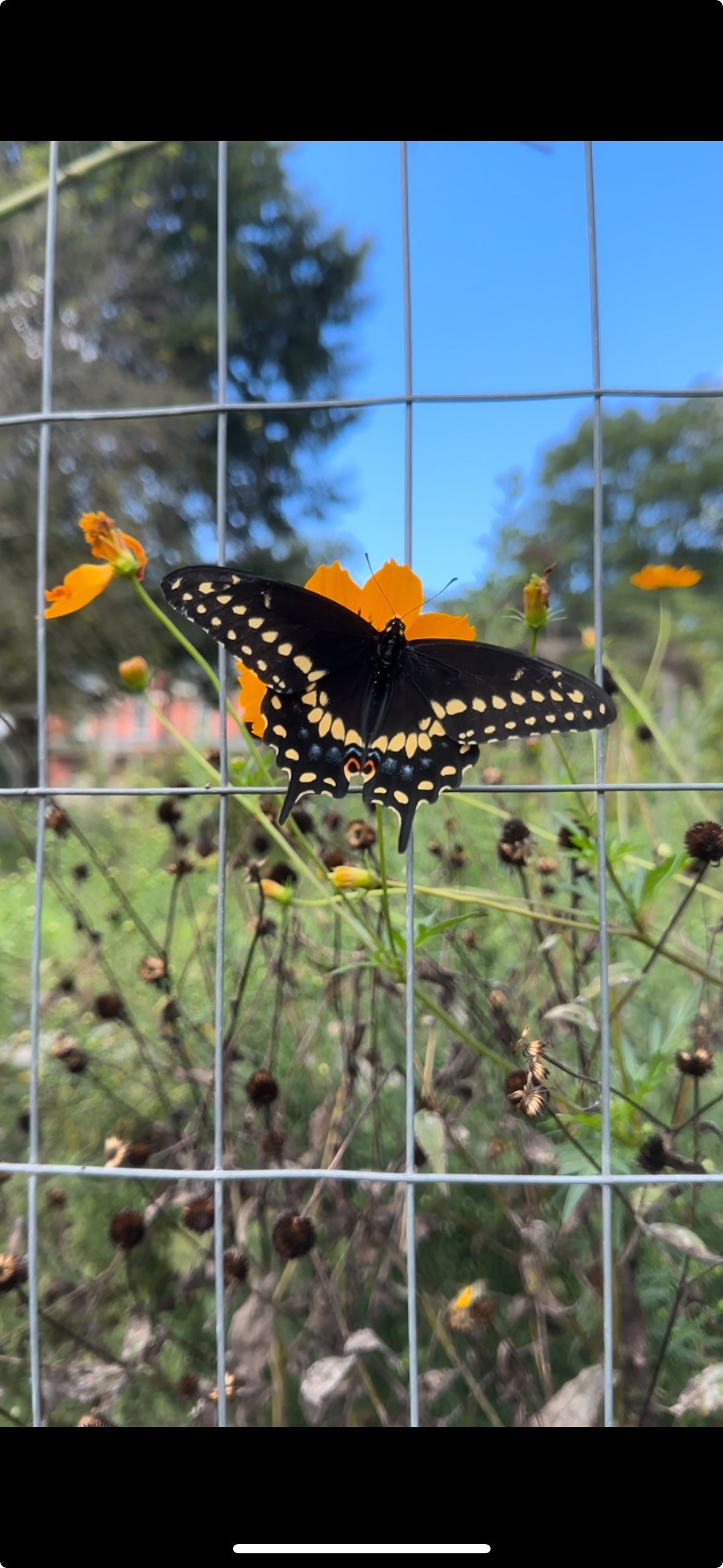Swallowtails at SEEDS
While going about our day, we noticed a swallowtail visiting our carrots to lay eggs. This was unfortunate as we were getting ready to harvest them; however, this provided us a chance to see firsthand the lifecycle of a Swallowtail butterfly. If you spot a butterfly quickly flying from plant to plant that has no flowers, it is likely laying eggs on that plant. A week after the swallowtail had visited our carrots, we could finally see the evidence of the swallowtail's visit—a first instar caterpillar! As of October 1st there is one chrysalis and a hand full of full grown caterpillars.
The stages of a Swallowtail
The swallowtail butterfly has four main stages: the eggs, the caterpillar (larval), the chrysalis (pupal), and the butterfly.
The first instar stage could easily be mistaken for a speck of dirt; however, if you look closely, you would see a small white spot in the middle of the caterpillar, setting itself apart from a speck of dirt.
The second instar caterpillar does not look so dissimilar to the first instar; it is a little larger than the first and has a bit more color.
The third instar is when the caterpillar starts to take on the pale green body, with horizontal black stripes lined with yellow dots.
The next stage is when the caterpillar is considered fully grown; the only appearance change is size, and it takes on a more vibrant green. The fully grown caterpillar then forms a "J" with its body and is now in pre-pupa stage. From the pre-pupa, an early stage chrysalis is formed; it is a pale, vibrant green. The late stage chrysalis is brown, with orange dots on some areas.
The butterfly then emerges from the chrysalis, with their wings folded in on itself. When the wings have fully dried and has their full spread, the swallowtail is ready to fly away and repeat the cycle. The Swallowtail caterpillar is currently at the early stage chrysalis, so stay tuned to find out what happens next.
How to get Swallowtails to come to your home
If you want swallowtails to come to your home, the best thing to do is plant native plants, such as goldenrod, coneflower, amaranth, and many more. The next thing is to plant in the apiaceae family. The apiaceae family is the swallowtails host plant, which means it exclusively lays eggs on plants in the apiaceae family.




